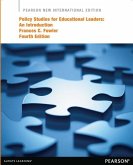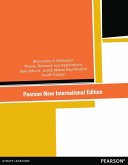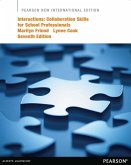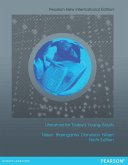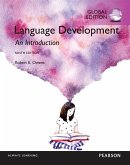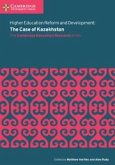Early Childhood Development: A Multicultural Perspective, 6/e addresses both typical and atypical child development from birth through age eight. This text highlights the diversity of child development, preparing professionals to meet the unique needs of children from a wide variety of backgrounds.
From reviews of Early Childhood Development: A Multicultural Perspective:
“I believe that overall the textbook is unique in its multicultural approach. It is also very reader friendly and contains the information that is essential to understanding the development of children. . . . [T]his text is one of the few that truly does focus on the early development years. Additionally, it is one of the only [texts] that has the multicultural emphasis.”
—Keri Maxwell, West Virginia University
“I use the text because it is the only one that I have found with a true multicultural focus throughout, not just a “multicultural” chapter at the end of the book. . . . [The W]riting is excellent, especially helpful are the examples and vignettes. . . . [The book] gives multiple examples of how content is applied; gives a review of important points; and gives application ideas at the end of each chapter. [A] strength [of Chapter 18] is looking at family issues (poverty, oppression, etc.) and going through the different age ranges covered in this book. That helped to integrate that knowledge about families and apply it across ages.”
—Sandra Newcomb, University of Maryland, College Park
“Excellent text. . . . [T]he author has done an outstanding job of presenting key concepts in a readable, understandable, and relational way. Excellent Research into Practice [feature].”
–Marilee Cosgrove, California State University, Fullerton
Features + Benefits
Development is Examined from a Multicultural Perspective.
• Developmental domains are presented with examples drawn from diverse cultures. This multicultural perspective prepares adults to meet the distinct needs of every child.
Practical Applications Make This Text a Hands-on Guide for Educators and Caregivers.
• Assessing Young Children features help professionals interpret the behavior of young children and use this information to plan programs, guide interactions, and enrich development.
• Classroom Adaptations features provide practical ideas for adapting classroom space, materials, curricula, and adult interactions for children with special needs.
• Child Guidance features offer research-based methods to enrich children’s physical, cognitive, social, emotional, or linguistic development.
• Research into Practice sections describe practical classroom and parenting applications.
• The Media features examine the influence of television and computers on young children’s development, with recent research suggesting recommendations for teachers and parents.
Advocacy and Key Public Policy Issues Related to Child Development Are Discussed in Every Chapter.
• Each chapter connects the research and theories of the text with ideas for advocacy and the shaping of public policy to benefit children and families.
• Advocacy and Public Policy features present key public policy issues for each level and domain of development as well as examples and suggestions for how professionals can integrate advocacy into their practice.
Chapter 1: Studying Early Childhood Development in a Diverse World
Chapter 2: Historical Perspectives and Research in Early Childhood Development
Chapter 5: The Newborn
Chapter 6: Infant Physical Growth and Brain Development
Chapter 7: Cognitive Development in Infancy
Chapter 8: Infant Language and Literacy
Chapter 9: Infant Social and Emotional Development
Chapter 10: Preschool Physical and Motor Development
Chapter 11: Cognitive Development in the Preschool Years
Chapter 12: Symbolic Thought: Play, Language, and Literacy in the Preschool Years
Chapter 13: Social and Emotional Development of Preschoolers
Chapter 14: Physical Growth and Motor Development in the Primary Years
Chapter 15: Cognition and Schooling
Chapter 16: Language, Literacy, and Schooling
Chapter 17: Social and Emotional Development in the Primary Years
Early Childhood Development: A Multicultural Perspective, 6/e addresses both typical and atypical child development from birth through age eight. This text highlights the diversity of child development, preparing professionals to meet the unique needs of children from a wide variety of backgrounds. From reviews of Early Childhood Development: A Multicultural Perspective: ?I believe that overall the textbook is unique in its multicultural approach. It is also very reader friendly and contains the information that is essential to understanding the development of children. . . . [T]his text is one of the few that truly does focus on the early development years. Additionally, it is one of the only [texts] that has the multicultural emphasis.? ?Keri Maxwell, West Virginia University ?I use the text because it is the only one that I have found with a true multicultural focus throughout, not just a ?multicultural? chapter at the end of the book. . . . [The W]riting is excellent, especially helpful are the examples and vignettes. . . . [The book] gives multiple examples of how content is applied; gives a review of important points; and gives application ideas at the end of each chapter. [A] strength [of Chapter 18] is looking at family issues (poverty, oppression, etc.) and going through the different age ranges covered in this book. That helped to integrate that knowledge about families and apply it across ages.? ?Sandra Newcomb, University of Maryland, College Park ?Excellent text. . . . [T]he author has done an outstanding job of presenting key concepts in a readable, understandable, and relational way. Excellent Research into Practice [feature].? ?Marilee Cosgrove, California State University, Fullerton
Hinweis: Dieser Artikel kann nur an eine deutsche Lieferadresse ausgeliefert werden.
From reviews of Early Childhood Development: A Multicultural Perspective:
“I believe that overall the textbook is unique in its multicultural approach. It is also very reader friendly and contains the information that is essential to understanding the development of children. . . . [T]his text is one of the few that truly does focus on the early development years. Additionally, it is one of the only [texts] that has the multicultural emphasis.”
—Keri Maxwell, West Virginia University
“I use the text because it is the only one that I have found with a true multicultural focus throughout, not just a “multicultural” chapter at the end of the book. . . . [The W]riting is excellent, especially helpful are the examples and vignettes. . . . [The book] gives multiple examples of how content is applied; gives a review of important points; and gives application ideas at the end of each chapter. [A] strength [of Chapter 18] is looking at family issues (poverty, oppression, etc.) and going through the different age ranges covered in this book. That helped to integrate that knowledge about families and apply it across ages.”
—Sandra Newcomb, University of Maryland, College Park
“Excellent text. . . . [T]he author has done an outstanding job of presenting key concepts in a readable, understandable, and relational way. Excellent Research into Practice [feature].”
–Marilee Cosgrove, California State University, Fullerton
Features + Benefits
Development is Examined from a Multicultural Perspective.
• Developmental domains are presented with examples drawn from diverse cultures. This multicultural perspective prepares adults to meet the distinct needs of every child.
Practical Applications Make This Text a Hands-on Guide for Educators and Caregivers.
• Assessing Young Children features help professionals interpret the behavior of young children and use this information to plan programs, guide interactions, and enrich development.
• Classroom Adaptations features provide practical ideas for adapting classroom space, materials, curricula, and adult interactions for children with special needs.
• Child Guidance features offer research-based methods to enrich children’s physical, cognitive, social, emotional, or linguistic development.
• Research into Practice sections describe practical classroom and parenting applications.
• The Media features examine the influence of television and computers on young children’s development, with recent research suggesting recommendations for teachers and parents.
Advocacy and Key Public Policy Issues Related to Child Development Are Discussed in Every Chapter.
• Each chapter connects the research and theories of the text with ideas for advocacy and the shaping of public policy to benefit children and families.
• Advocacy and Public Policy features present key public policy issues for each level and domain of development as well as examples and suggestions for how professionals can integrate advocacy into their practice.
Chapter 1: Studying Early Childhood Development in a Diverse World
Chapter 2: Historical Perspectives and Research in Early Childhood Development
Chapter 5: The Newborn
Chapter 6: Infant Physical Growth and Brain Development
Chapter 7: Cognitive Development in Infancy
Chapter 8: Infant Language and Literacy
Chapter 9: Infant Social and Emotional Development
Chapter 10: Preschool Physical and Motor Development
Chapter 11: Cognitive Development in the Preschool Years
Chapter 12: Symbolic Thought: Play, Language, and Literacy in the Preschool Years
Chapter 13: Social and Emotional Development of Preschoolers
Chapter 14: Physical Growth and Motor Development in the Primary Years
Chapter 15: Cognition and Schooling
Chapter 16: Language, Literacy, and Schooling
Chapter 17: Social and Emotional Development in the Primary Years
Early Childhood Development: A Multicultural Perspective, 6/e addresses both typical and atypical child development from birth through age eight. This text highlights the diversity of child development, preparing professionals to meet the unique needs of children from a wide variety of backgrounds. From reviews of Early Childhood Development: A Multicultural Perspective: ?I believe that overall the textbook is unique in its multicultural approach. It is also very reader friendly and contains the information that is essential to understanding the development of children. . . . [T]his text is one of the few that truly does focus on the early development years. Additionally, it is one of the only [texts] that has the multicultural emphasis.? ?Keri Maxwell, West Virginia University ?I use the text because it is the only one that I have found with a true multicultural focus throughout, not just a ?multicultural? chapter at the end of the book. . . . [The W]riting is excellent, especially helpful are the examples and vignettes. . . . [The book] gives multiple examples of how content is applied; gives a review of important points; and gives application ideas at the end of each chapter. [A] strength [of Chapter 18] is looking at family issues (poverty, oppression, etc.) and going through the different age ranges covered in this book. That helped to integrate that knowledge about families and apply it across ages.? ?Sandra Newcomb, University of Maryland, College Park ?Excellent text. . . . [T]he author has done an outstanding job of presenting key concepts in a readable, understandable, and relational way. Excellent Research into Practice [feature].? ?Marilee Cosgrove, California State University, Fullerton
Hinweis: Dieser Artikel kann nur an eine deutsche Lieferadresse ausgeliefert werden.


